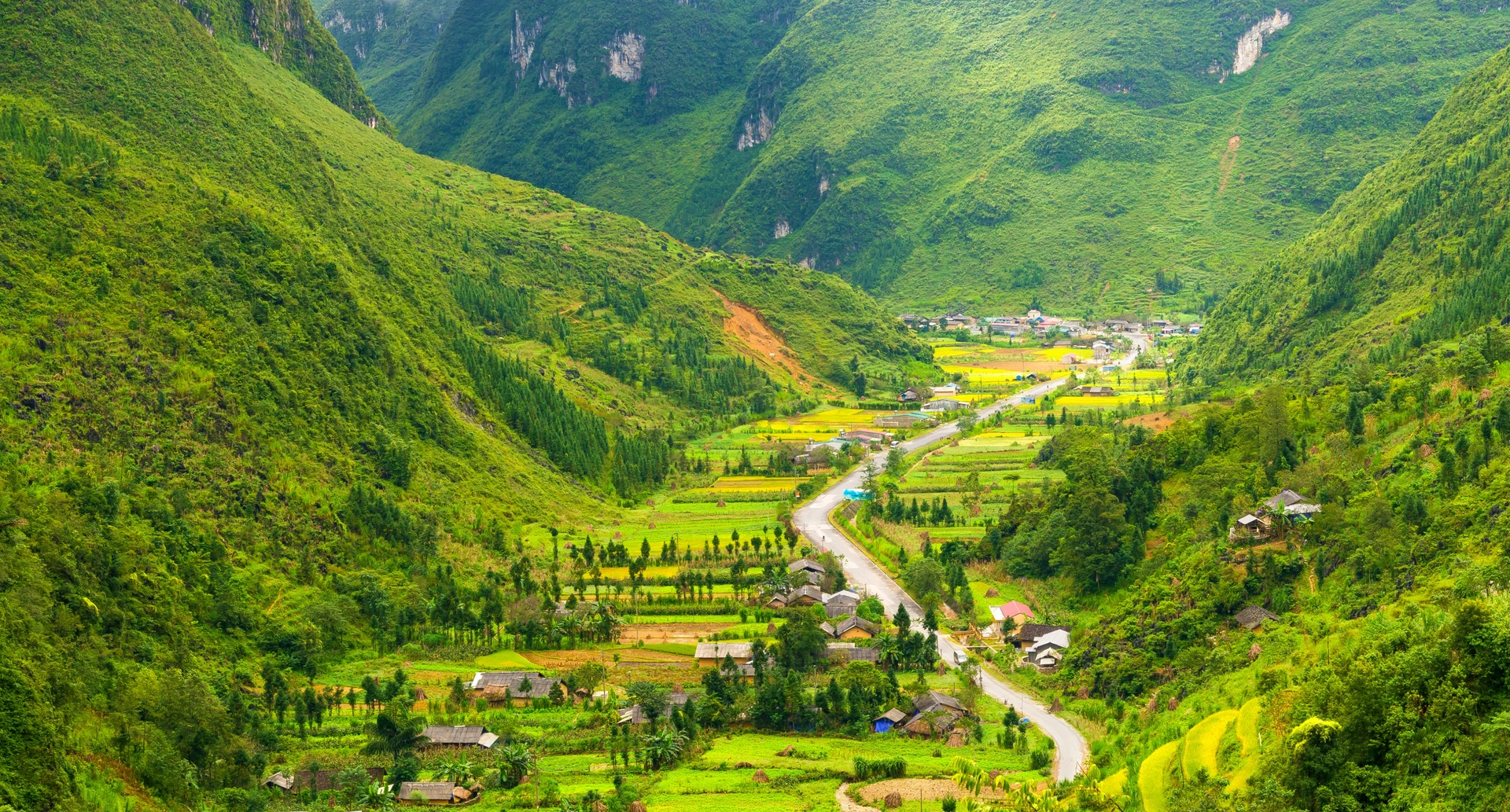What season is Ha Giang beautiful?
As a high-mountainous province, the climate in Ha Giang is markedly cold compared to the neighboring lowlands and midlands. The average annual temperature is about 21-23 degrees Celsius.
You can travel to Ha Giang in any season of the year. People often come to Ha Giang in autumn when the rice is ripe and yellow. The best time is October, November and December, when buckwheat flowers or cabbage fields are in full bloom. And in spring, apricot flowers and plum blossoms bloom in the forest, making you feel like you are floating in the clouds.
In May, the fields sparkle during the pouring season. In June and July, many people miss Ha Giang because of the sudden summer rains. But also thanks to this humidity, the mountains and forests here are dressed in a green color that captivates people's hearts.
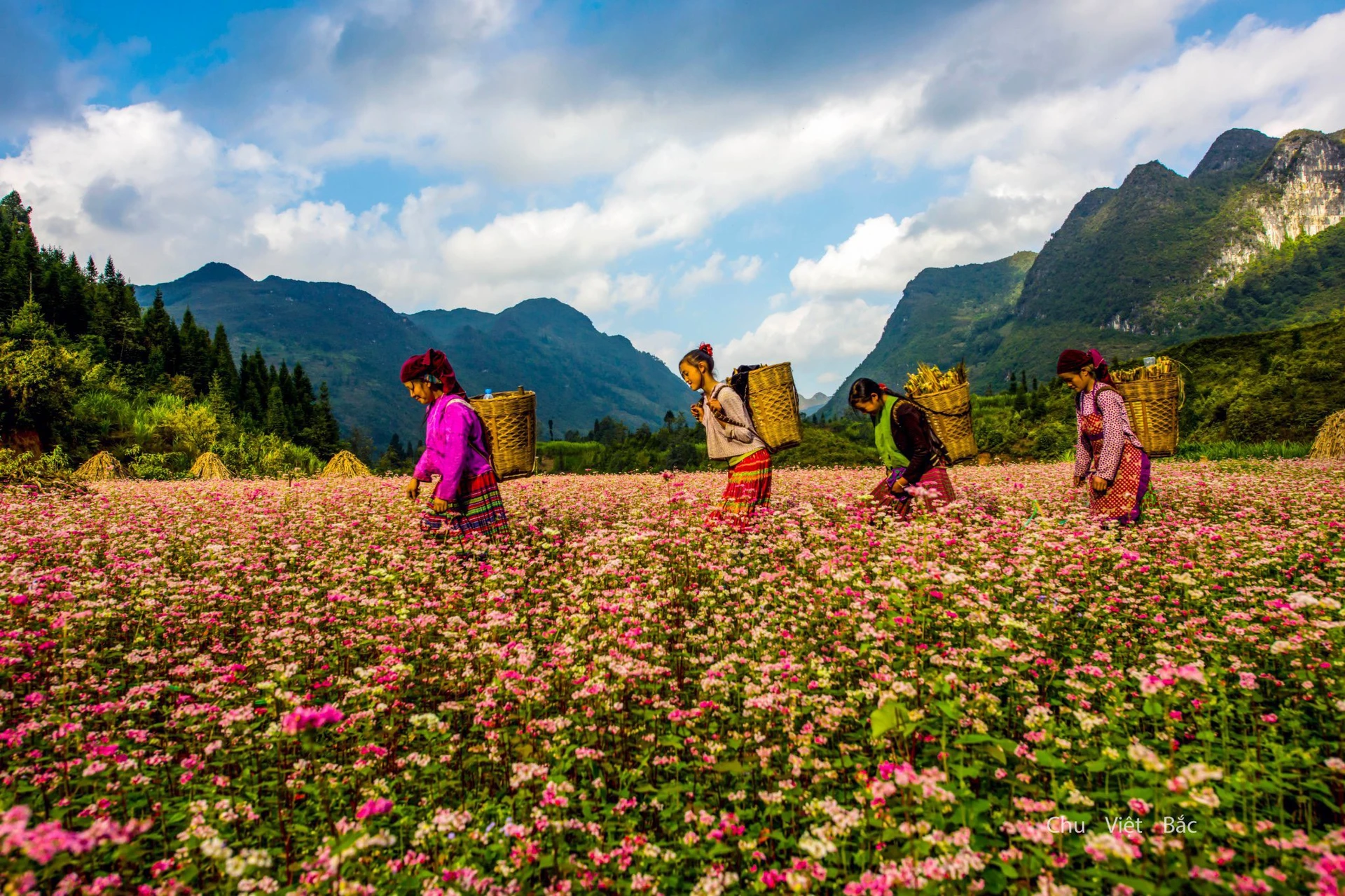
Photo: Chu Viet Bac
Move
Getting to Ha Giang from the Northern provinces is very easy because there are many direct buses. In contrast to tourists who are far away in the South or Central Vietnam, they should start their journey from Hanoi. From Hanoi, there are almost always buses departing from My Dinh, Luong Yen, Yen Nghia, Gia Lam bus stations.
Guests can choose between a sleeper car or a high-quality limousine, depending on finances. However, you should travel by night bus to save time and keep your energy for a long exploration journey. The price of bus tickets from Hanoi to Ha Giang and vice versa ranges from 200,000 to 300,000 VND per turn.
When you come to Ha Giang City, you can rent a motorbike for 150,000 - 300,000 VND per car for a day. On the contrary, if you do not have enough time and health, or the group has elderly people and young children, you should rent a 7-16 seater service car.


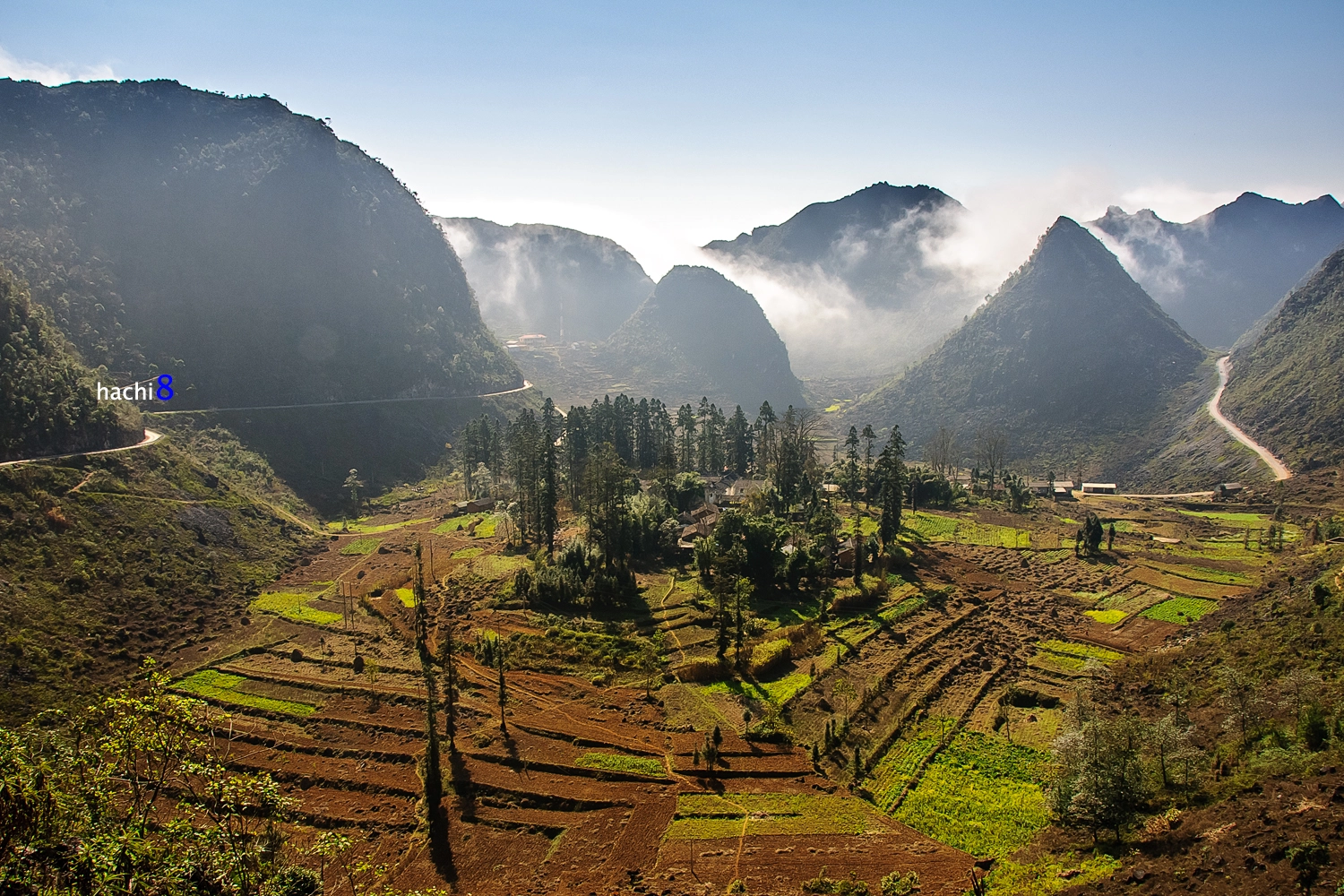
Photo: Nam Thai/VNA
Beautiful hotels and homestays
Families and couples who want to stay at a high-class and separate resort can come to P'apiu in Yen Dinh commune, Bac Me district. Here, visitors are immersed in the colors of the highlands by the longest brocade road in Vietnam, staying in villas and villas with the design of the H'Mong people. The price of a night stay is about 10,000,000 VND.
For visitors who love novelty, H'Mong Village with a cascading design is a suggestion. The resort is located on the hills of Trang Kim, Quan Ba, facing the Mien River and the majestic mountains in the distance. Visitors can choose to stay in the community room, priced at 400,000 VND per night or at a bungalow for 2,400,000 VND per night.
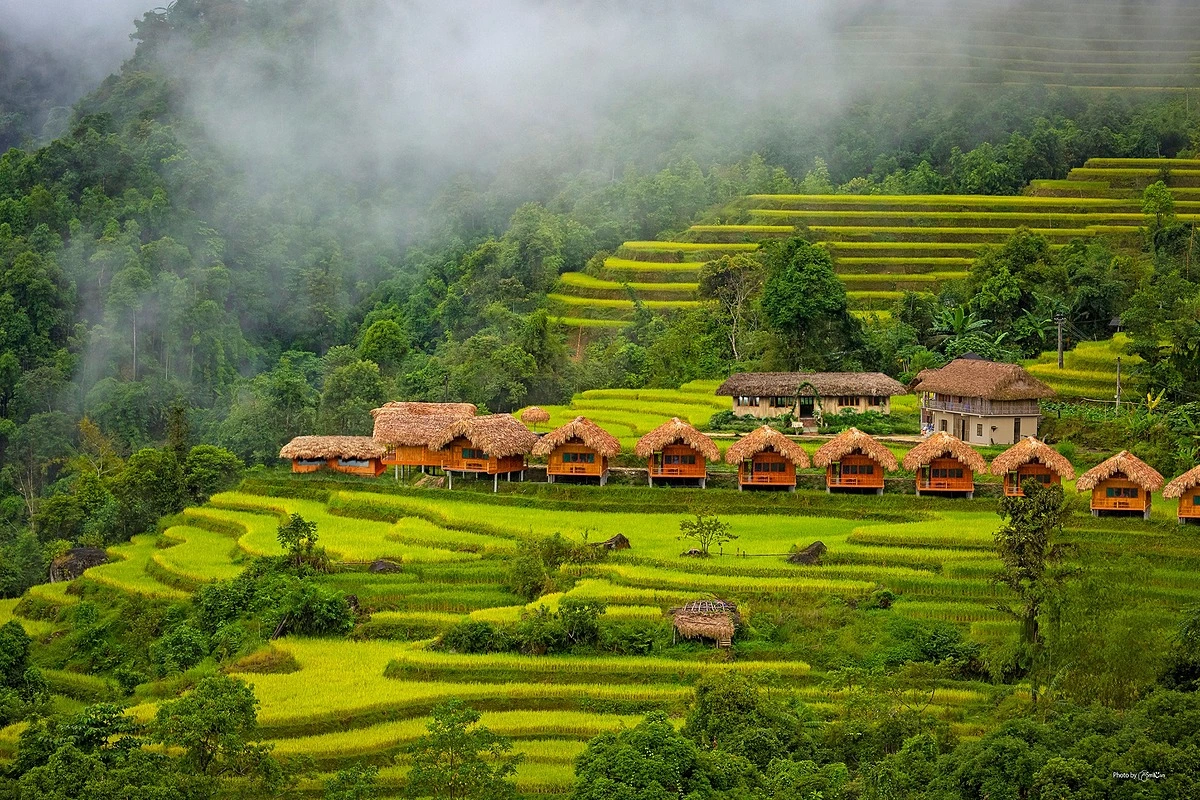



Photo: Hoang Su Phi Logde
With the option of being close to the community and having a lower cost, visitors can stay at homestays , including in Hoang Su Phi there are Hoang Su Phi Lodge and Kinh Homestay, close to the terraced fields in Nam Hong village; Ho Tau Eco Village, Ho Tau commune with a lodge with thatched roof walls.
In addition, you can stay in Chung Pua - Auberge de MeoVac (Meo Vac) with a local house or Bui homestay is a stilt house in Dong Van. In Dong Van, there is also an ancient house of Hoang Than priced at 100,000 VND per person; Meo Vac Golden Bee costs only 230,000 VND per night. In Lo Lo Chai village near the Lung Cu flagpole, there is a homestay Lo Lo Ancient House.
Where to play, Ha Giang
Because tourist attractions in Ha Giang are far from each other, you should choose a journey of at least 3 days and 2 nights to have enough time to "ride a horse to see flowers". The 3 days and 4 nights itinerary is recommended by many tourists, or more abundant than 5 days.
From the city, the first point is the Km 0 milestone, then move to Quan Ba about 40 km. There is a sky gate here which is a famous check-in point, but if you go in winter, there is a possibility of encountering clouds. If the sky is clear, you can take pictures and see the fields below.
From here, you can see Nam Dam Lake, belonging to Nam Dam village, which is a famous Dao homestay village in Quan Ba. In addition to the sky gate, you can also visit the Twin Fairy Mountains not far away. Note, when going to Can Tri Bridge, there are 2 turns, the uphill passage will save you 20 km, but it is also more difficult and requires hard steering. Let's calculate the time to get to Yen Minh and have lunch there.
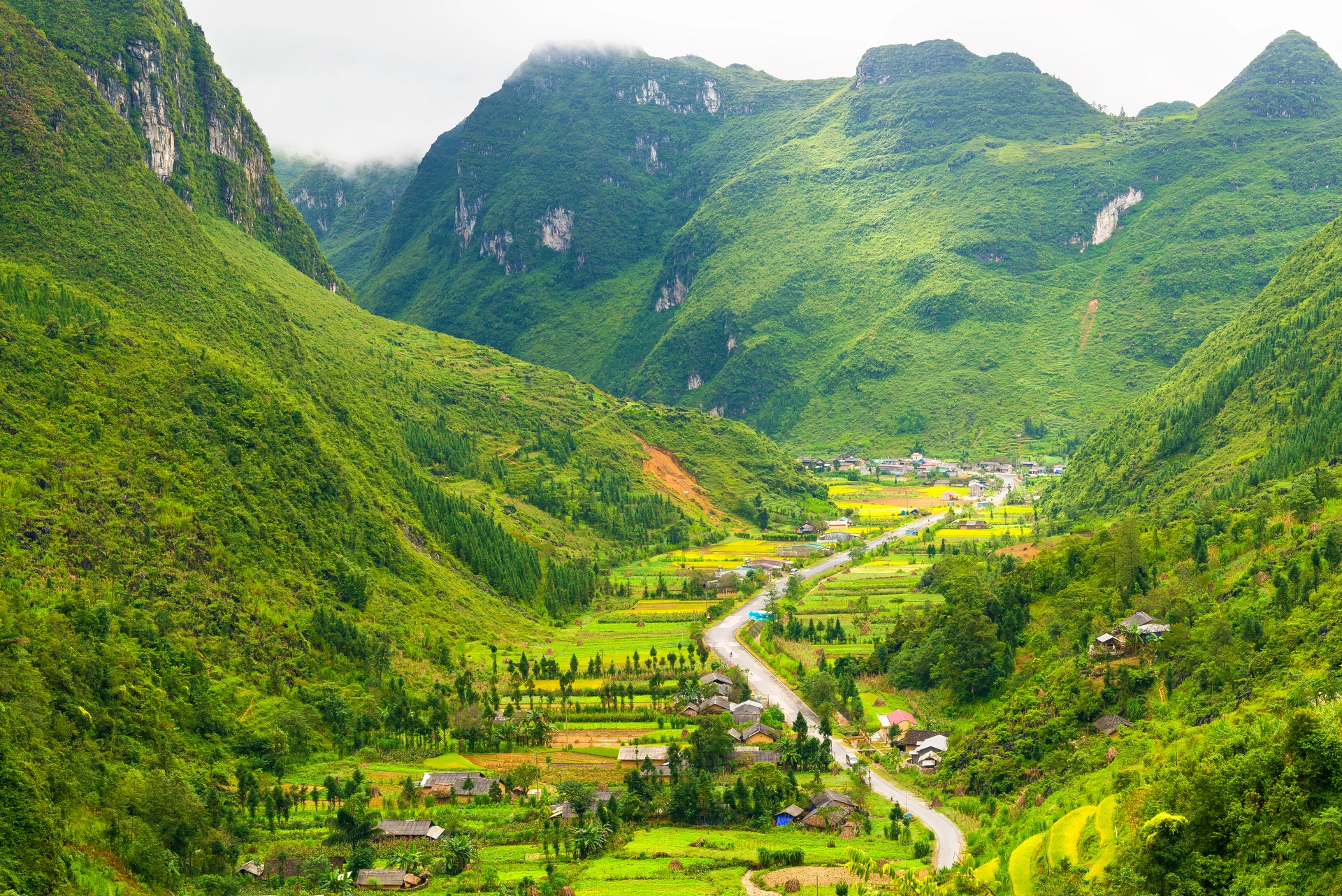
Photo: Shutter stock
From Yen Minh to Dong Van Temple is a route with many beautiful scenery and well-known tourist attractions. It is Tham Ma Slope or 9 Khoanh Pass, the iconic check-in point of Ha Giang. Here, you can easily meet foreign friends, landscape photographers, and especially Mong babies full of flowers and grass
Fox Street - an ancient village is not commercialized, so it still retains many traditional features of the ancient Mong people. Or Pao's house, the setting of many Vietnamese films, is also a must-visit. Currently, Pao's house is both a homestay and a tourist destination. The above points are 10 km apart, please visit and pay attention to the time to arrive at Dong Van in time for dark.
Take some time in the morning to go to Dong Vab market, a regional characteristic that the downstream region does not have anywhere else. The market is busy with many items, from common things of the Kinh people such as electronics, vegetables, clothes... to ethnic specialties such as linen, brocade, buckwheat cakes, thang co... If you buy gifts, be sure to choose things that are easy to carry such as spices or linen.

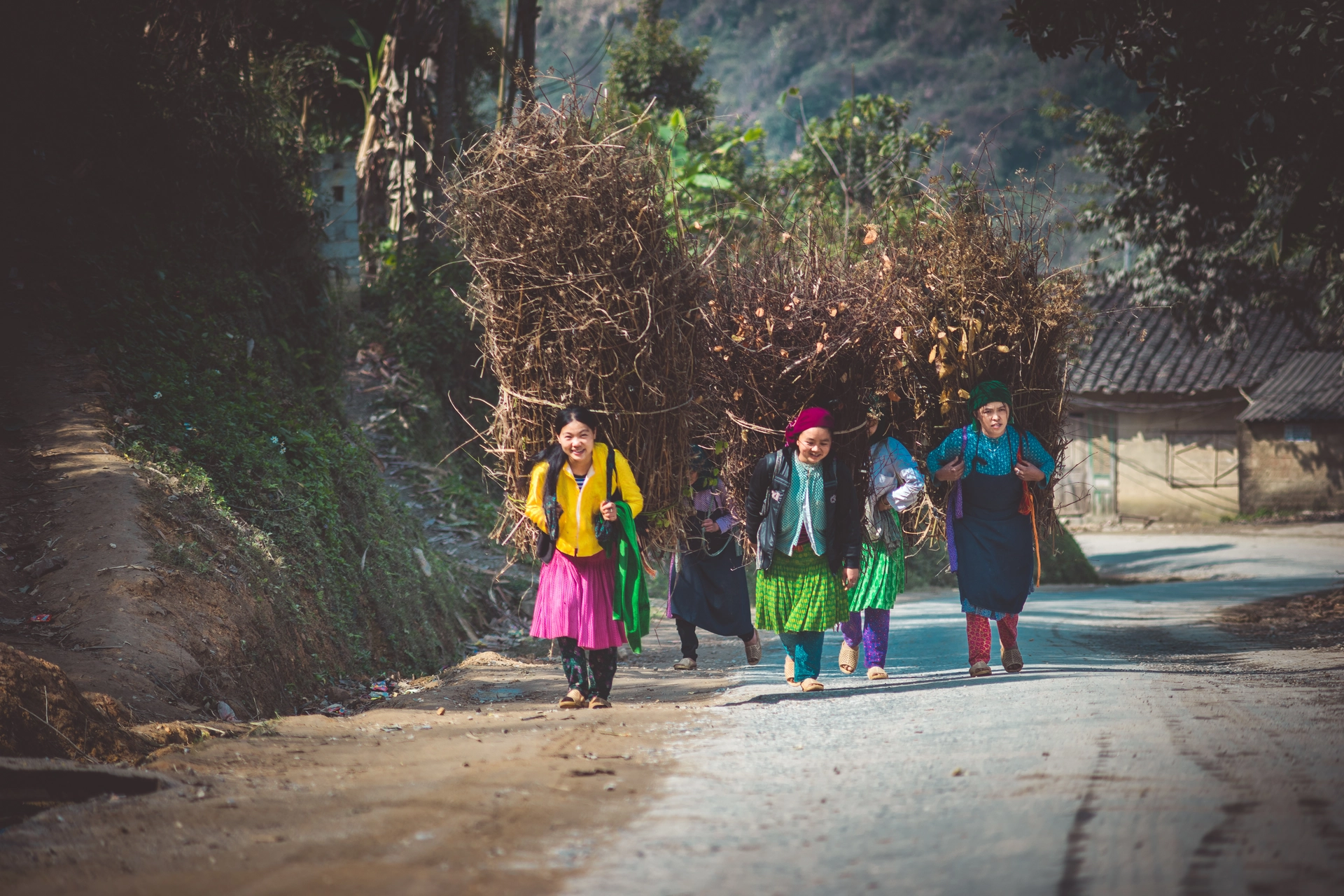

Photo: Vo Minh Thien/Shutter stock
In addition to the session market, in Dong Van you can also visit the Cat King's Palace. The campus of the relic area is nearly 3 hectares wide located in the valley of Sa Phin commune. The Cat King's Palace was built in the early 20th century, imitating Chinese architecture (Manchu Qing Dynasty) with exquisite curves, wavy strokes, and stalls. Entrance ticket is 20,000 VND one way.
If you don't go to the market or the Cat King's Palace, you can depart from 6:30 from Dong Van to Lung Cu to visit the flagpole right in the morning. This distance is 25 km long, having to go through many bad sections with crushed stones, steep crabs, potholes,... The travel time is about 1 hour and a half. Arriving at the place, visitors climb to the flagpole and look at the mountains and forests at the head of the country. If relaxed, the North Pole café is also an option to take a break.


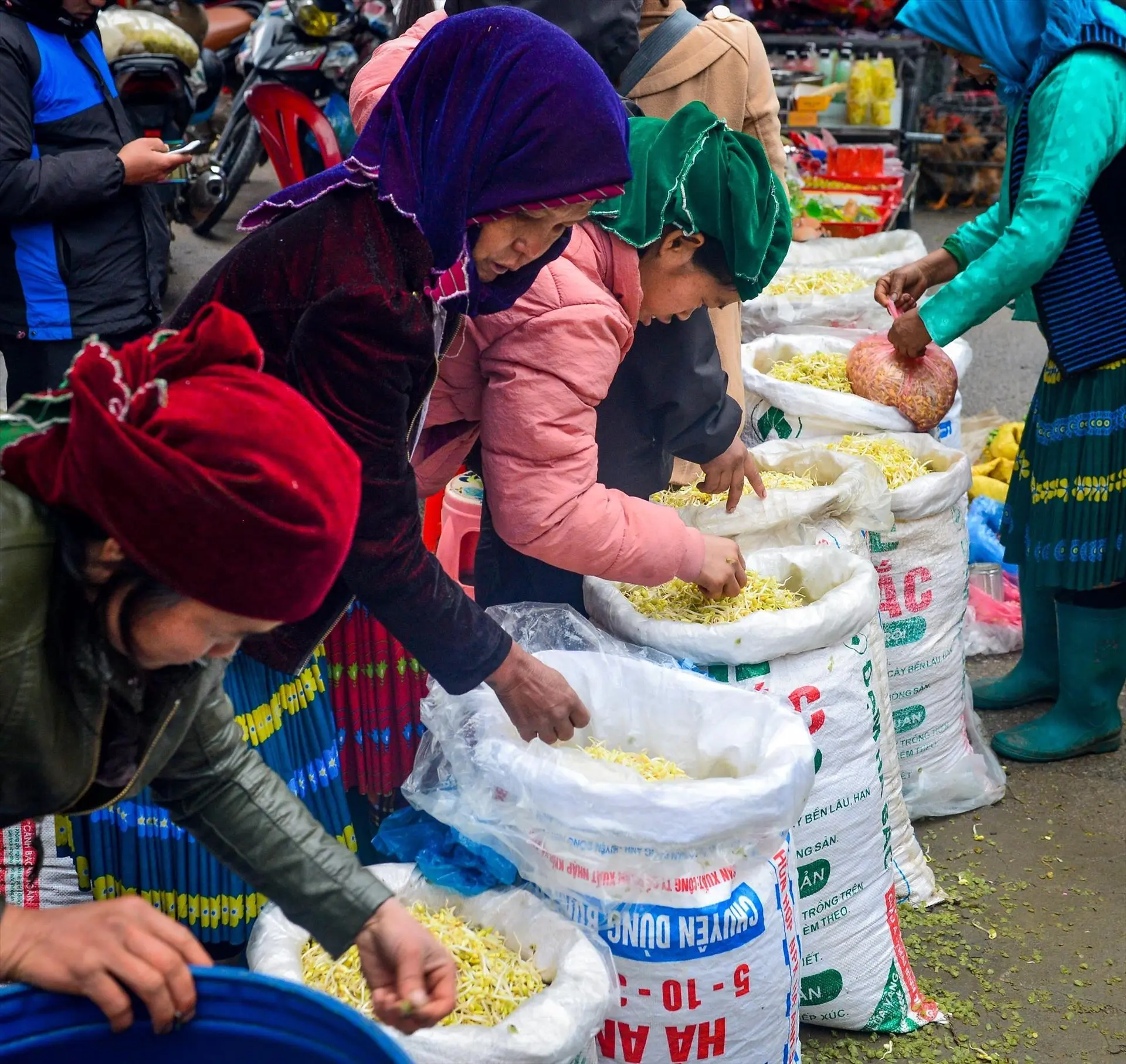

Photo: VNN
The motorbike road going down to the Nho Que river boat pier is very steep, in some places it is under construction, so it needs a hard driver. If you are not confident, you can hire a local motorbike taxi service for 150,000 VND two-way.
The road is difficult to walk, many bumpy sections, but the beauty of the turquoise river will partly dispel the fatigue of visitors. Weaving all the way around the cliff, you will come to the boat dock. The price of a boat ride on the Nho Que River is 100,000 VND per person, the journey is about 40 minutes. The boat usually stops in front of Tu San Alley, which has the most beautiful scenery for guests to take pictures.
Surrounding the pass are sky, clouds and mountains, so visitors can leisurely enjoy the scenery and take pictures. At the foot of the pass, you visit the Museum of Happy Road, learn about the difficult construction history of National Highway 4C, from Ha Giang city to Dong Van, Meo Vac.



Photo: Shutter stock
Ha Giang specialties
Coming to the land of Ha Giang, you should not miss the egg roll with a thin layer of wet dough, inside is the peach red of the egg.
Another dish that should be tried is Au Tau porridge cooked with yellow flower glutinous rice mixed with plain rice, the tubers are simmered thoroughly with fatty spring leg stew and herbs. Au Tau porridge is not only a simple dish, but also a tonic for relieving colds.
Chung Gu cake is a specialty of Ha Giang, wrapped by hand, the crust is green or black depending on the type of rice. If the cake is green, the rice is mixed with the rice noodles, and the black cake is mixed with mixed rice. The filling has both lean meat and fat. Cakes are packed daily by several families in Ha Giang city, but must be ordered in advance because the quantity is limited. Each cake costs from 17,000 VND.



Photo: VnE
Amaranth in Dong Van looks like steamed rice cake in Hanoi, made from glutinous rice flour, can be vegetarian or wrapped in bean paste.
Thang Co is not a dish that everyone can eat but is a specialty of the Northwest with the aroma of cardamom, doi seeds, lemongrass root with the greasy taste of meat.
Buckwheat cake is a typical cake of the Mong people in the rocky plateau. The process of making cakes is multi-stage, the harvested barley grains are dried and then ground until smooth, then mixed with water and then molded into flat round pieces, put into molds and then steamed. When eating, bake or fry. The cake has a fragrant, slightly sweet, slightly gritty taste.
Lam Bac Me rice has gradually become a typical specialty of the Tay ethnic group. When enjoyed, lam rice has a complex aroma mixed with banana leaves and toasted tubes, and it will be interesting to eat with sesame salt or with grilled stream fish.
According to VnE
